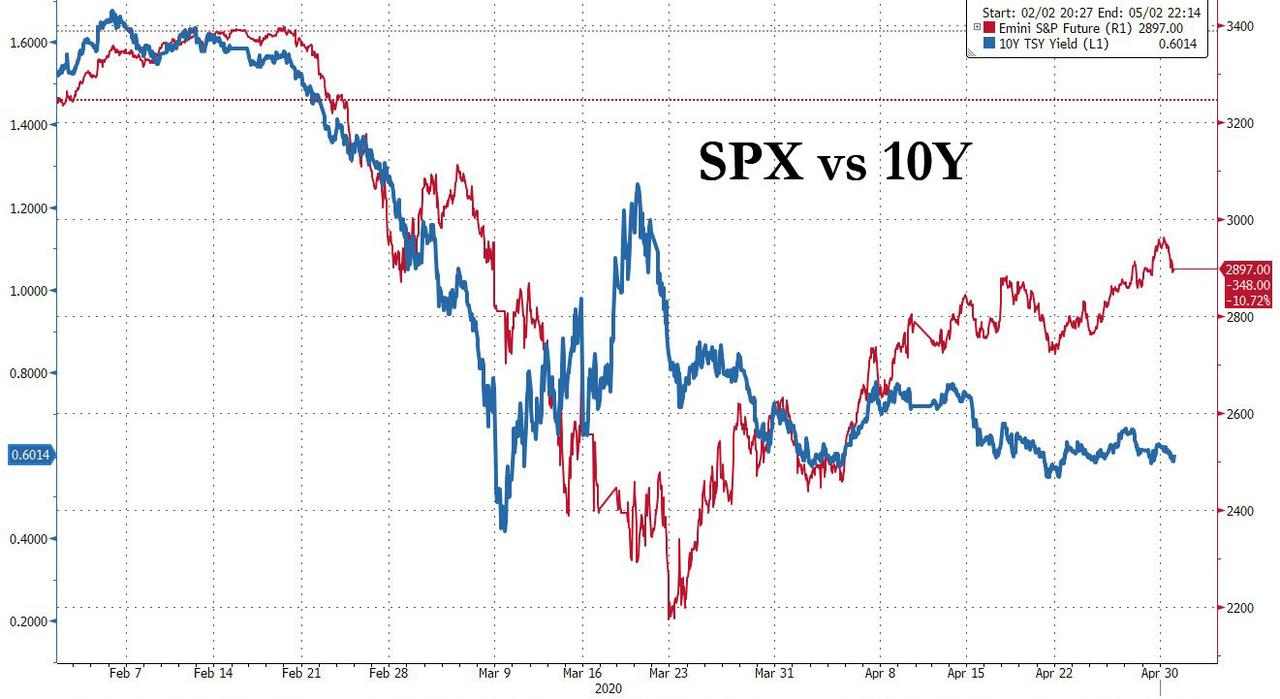In a word: Gilead. It's the optimism associated with the company's experimental Covid-19 therapy which has supported risk assets as this week nears the final stretch. Overnight, equity futures hit new post-crash highs (2965 for the S&P) as investors take solace in the progress being made to combat the outbreak. While Remdesivir (we're never going to correctly pronounce that) isn't a vaccine nor a silver-bullet to end the pandemic, the development of such a drug has shifted investor sentiment and points toward a potential path back toward a version of normality. While risk assets have benefited on the margin from this news, Gilead cannot be credited for the rally in domestic equities which has trimmed the year-to-date losses in the S&P 500 to just 9%. It's well within the realm of conceivable outcomes that May is the month stocks breakeven for 2020; leaving behind the volatility of March and April. For context, the Nasdaq is already effectively flat on the year.
The recovery of equity markets doesn't imply the economic damage from the coronavirus has been mitigated or that we've even seen the full extent of the downside; recall the current quarter is anticipated to reveal a contraction that will shatter records and models. For the time being however, the macro narrative has transitioned toward reopening, recovering, and rebuilding. The US rates market hasn't been overcome by the same optimism seen in other assets and with 10-year yields once again at 61 bp we're impressed by the sustainability of the range. If a -4.8% Q1 real GDP print and the Fed affirming limitless QE isn't enough to budge Treasuries, we struggle to see anything on the immediate horizon which will.

Fed's Powell Says Now Is Not the Time to Worry About Federal Debt
Receive a daily recap featuring a curated list of must-read stories.
This isn't to suggest that in 2021 10s will be holding on to the 54 bp to 78 bp zone; even if it currently appears that might be the most likely outcome. We're retaining our call to see the eventual reemergence of inflationary pressure in the wake of the pandemic, which will serve to push longer-dated Treasury yields higher and bring into focus the 1.25-1.50% range as the new year approaches. This is, as they say, a lifetime away given the current market conditions. In the very near-term, the present range will remain the defining characteristic in US rate space. As such, 54-78bp 10s will be in place well through month end and with recent experience as a guide, a sustainable breakout won't be on the table until mid-May or later. The logic underlying this call is that the incoming economic data will continue to be ignored in favor of headlines regarding the treatment of Covid-19 and the success of the reopening efforts – which will commence in earnest during the second half of the month.
Commenti
Posta un commento